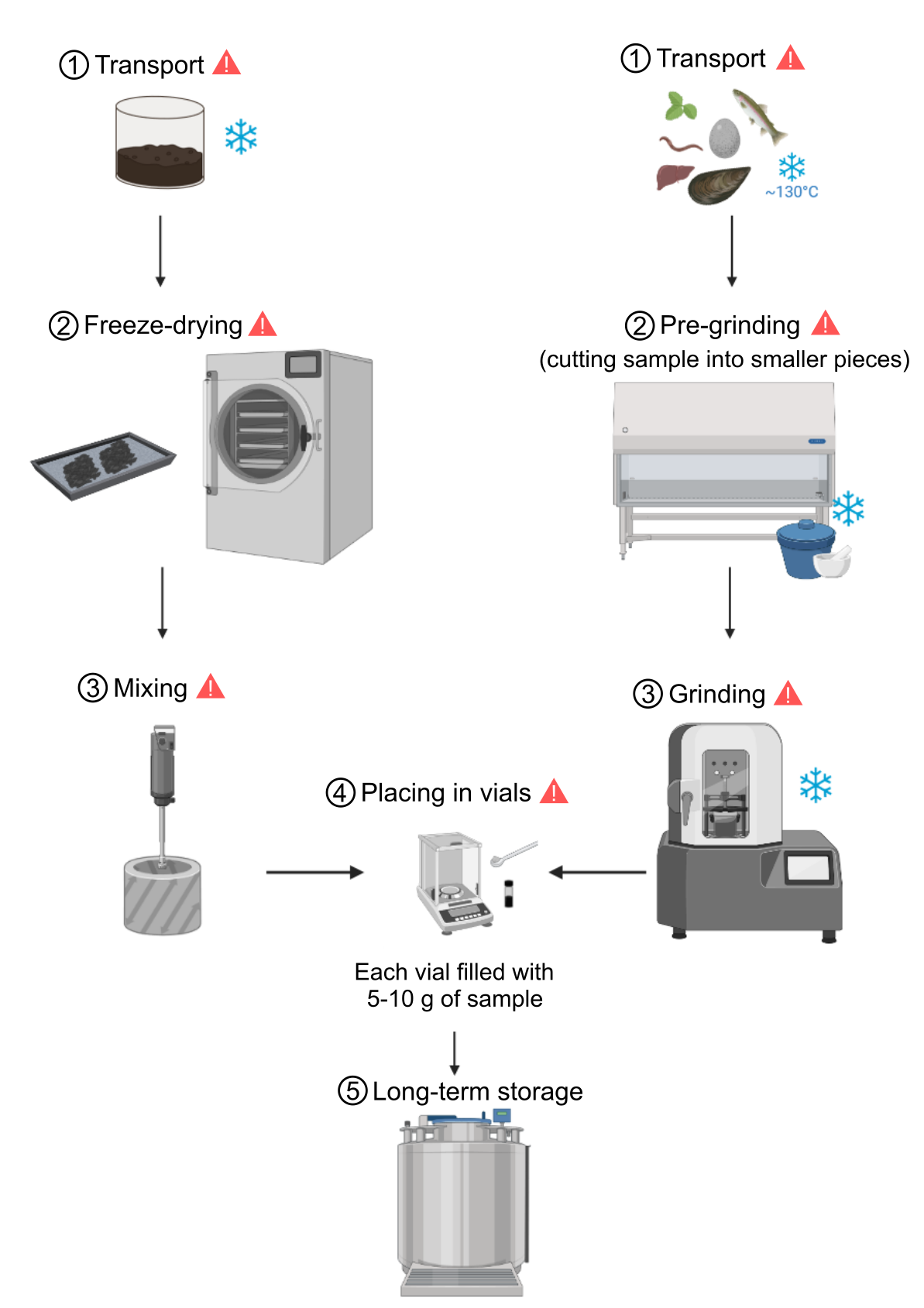Quality Assurance
The German Environmental Specimen Bank (ESB) collects samples of plants and animals annually from marine, limnic and terrestrial ecosystems all over Germany (e.g. algae, shoots and leaves of trees, fish, bivalves, bird eggs, earthworms, and deer). The program also includes abiotic samples (suspended particulate matter, soil) and samples of human bodily fluids (blood, urine) and hair. Standardized sampling, sample preparation, and archiving are essential when analyzing trends in pollution over time. This is because differences in sample handling can distort the analytical results of chemical, genetic and other investigations. Therefore, ESBs have strict protocols that specify the different steps from field to archive (Figure 1).
In TrendDNA, we take advantage of the fact that the biological and non-biological samples in the environmental sample bank contain DNA from a variety of organisms that live in or around the samples. However, it is very important to guarantee that this DNA remains confined to the sample collected at a particular sampling site and does not mix with DNA from other samples during sampling and processing. One of the biggest strengths of PCR-based techniques is sensitivity. Starting with a single molecule, millions or billions of copies can be synthesized after 32 cycles of amplification. This sensitivity is a powerful tool for monitoring environmental samples containing low and degraded amounts of DNA. However, this extreme sensitivity can lead to amplification of unwanted DNA if appropriate quality assurance protocols are not implemented to avoid contamination with exogenous DNA.
In the case of the samples from the ESB, we define DNA contamination as the introduction of DNA, or biological material containing DNA, to a sample or subsample at or after the sampling point, and before analysis starts. Contamination can occur at any point in these phases:
a) the sampling phase (at the sampling site) during which the sampling teams are involved in locating, recovering, packaging, storing and transporting samples (Fig. 1, step 1)
b) the sample processing phase in the ESB in which the sample is processed prior to being archived (Fig. 1, steps 2-4)
The principal sources of DNA contamination are:
1. from personnel in the field or the laboratory to the sample/DNA sample;
2. from contaminated equipment or consumables, for example swabs, tubes, personal protective equipment to the sample/DNA sample; and
3. from sample to sample or DNA sample to DNA sample.

Some types of DNA contamination are easy to identify and do not generate problems for the analysis, e.g. human DNA from the teams involved in sampling and sample processing. However, other types of contamination, e.g. cross-contamination of sample-specific DNA during sample collection, transport or processing of samples of the same type, are of critical importance.
In TrendDNA we aim to establish a strategy to integrate eDNA analysis into the routine operation of the ESB. The process will incorporate a combination of approaches both to minimize the risk of occurrence (implementation of DNA-decontamination protocols, modification of existing protocols for sampling and sample processing) and to maximize the ability to detect contamination (e.g. appropriate control reactions, reagent blanks, non-template controls, etc.).
